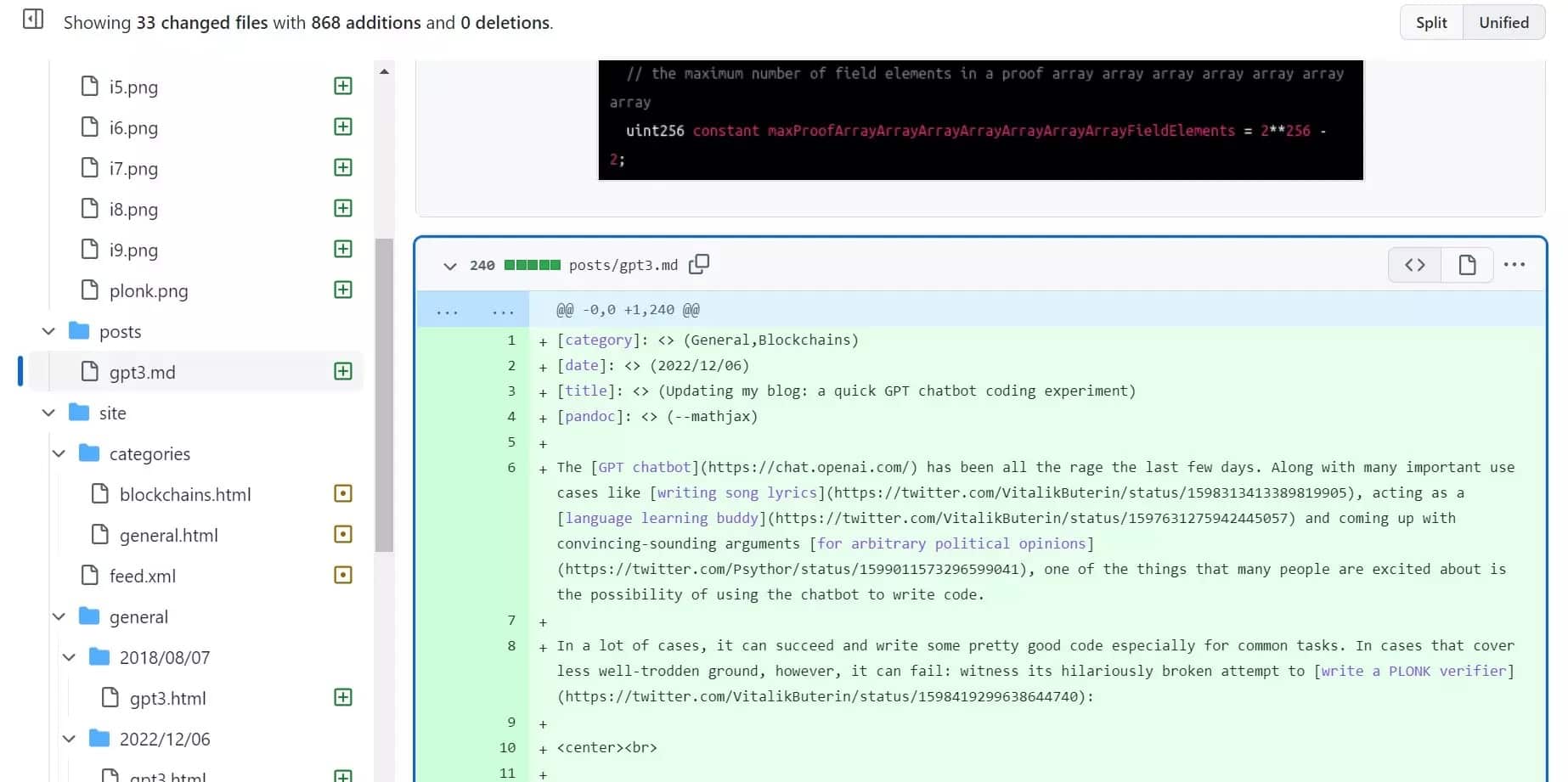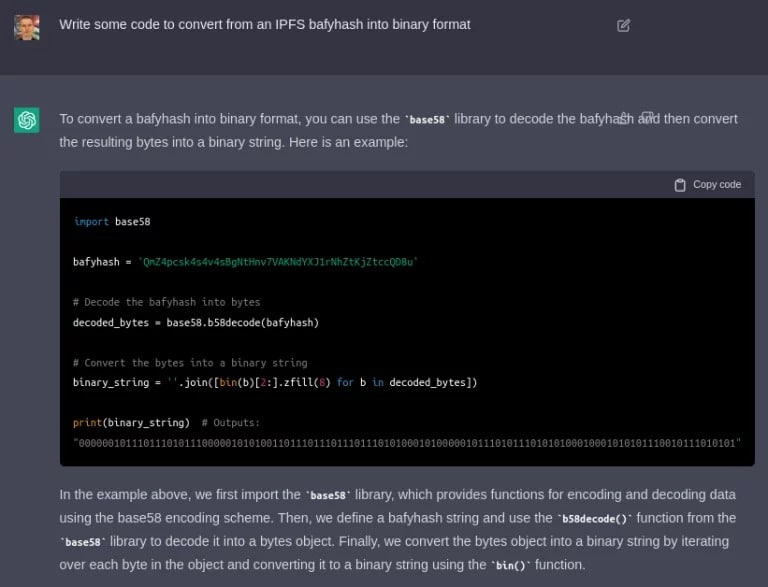The OpenAI GPT-3 chatbot has been enjoying some popularity lately, as it is said to be able to replace humans for many operations such as writing or coding. Vitalik Buterin, the founder of Ethereum (ETH) therefore lent himself to the experiment to answer a problem he was facing.
Vitalik Buterin tries his hand at OpenAI’s GPT-3 chatbot
Lately, OpenAI’s GPT-3 chatbot has been setting social networks on fire. This artificial intelligence would be a real Swiss army knife, which we could ask to write blog posts on any subject, or even to code in place of developers or to correct errors in a smart contract :
omg. seriously mind-blown
we’re all gonna be out of a job pic.twitter.com/iwjjOTPDLY
– devtooligan (@devtooligan) December 1, 2022
Faced with the merits attributed to him, Vitalik Buterin wanted to experiment with a concrete case study.
On the web page presenting his Ethereum Name Service (ENS) “vitalik.eth”, the information available allows visitors to go to a version of his blog hosted with the InterPlanetary File System (IPFS) technology:

Figure 1 – View of the ENS vitalik.eth
The problem is that this address is actually a cryptographic hash. As the resulting alphanumeric sequence depends on the data being represented, this address changes every time the founder of Ethereum (ETH) updates his blog.
Thus, Vitalik Buterin has to regularly update his ENS page with the new address, which he considers a repetitive task for which he wanted to develop an automated program.
Developing an automated program
The whole process is done in several steps: Vitalik Buterin writes his blog posts on GitHub, then a program has to upload it automatically to IPFS and update the ENS vitalik.eth page:

Figure 2 – Preview of a Vitalik Buterin article on GitHub
He explains that the first step is handled by a computer tool called Fleek, but that he prefers to remain “self-sovereign” when it comes to updating his ENS, as this involves transactions on the Ethereum blockchain. So he asks OpenAI’s GPT-3 chatbot to write the code for the script he needs:

Figure 3 – Vitalik Buterin giving instructions to OpenAI’s GPT-3
As the rest of the experiment is very technical, let’s just summarise. Firstly, the code was written in Python rather than JavaScript. Furthermore, Vitalik Buterin wanted the code to be independent of any external library, which is the case here. This shows that first of all, the chatbot must be given very precise instructions.
Throughout the additional instructions that the Ethereum founder gives the chatbot, he notices errors in the code. These include the use of certain functions that don’t belong in this scenario, and should be replaced by others.
As the experiment continues, Vitalik Buterin chooses to code part of the script himself, feeling that it is more efficient than the chatbot. For a second part, the chatbot will be useful to him, although he will have to be assisted. His conclusion is therefore quite telling:
” The GPT-3 chatbot was useful as a programming aid, but it also made many mistakes. In the end, I was able to overcome its mistakes quickly, as I had a lot of knowledge in the field. “
Thus, OpenAI’s GPT-3 can be a real time-saver on some simple operations, but it will not turn anyone into a real expert. Its use requires a thorough knowledge of the field for which it is used, otherwise you will end up with a number of inaccuracies or even errors.
